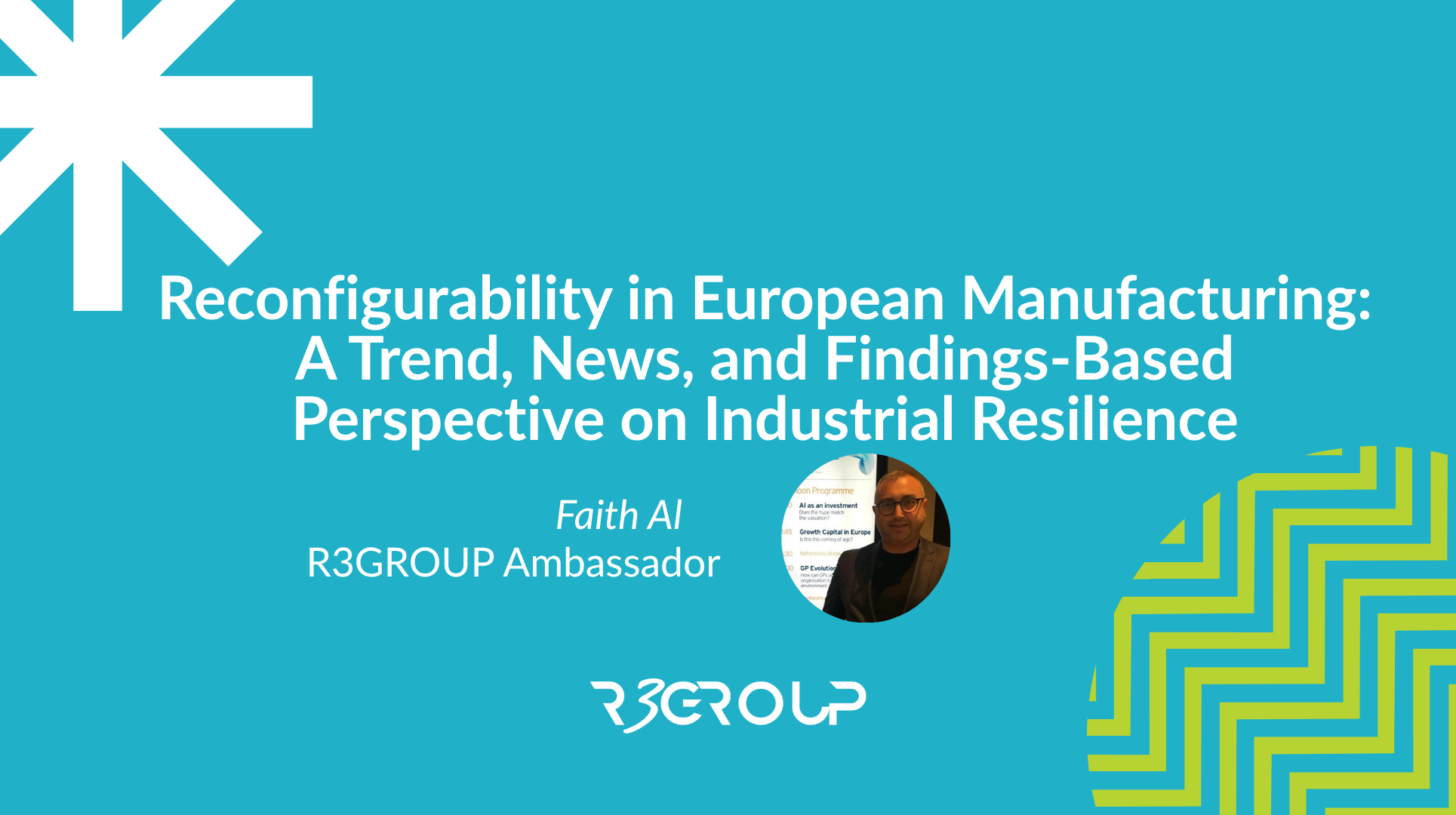1. INTRODUCTION
European manufacturing has faced unprecedented disruptions due to the pandemic, geopolitical instability, energy crises, and fragile global supply chains. Under such volatile conditions, production systems optimised solely for efficiency are no longer sufficient.
Instead, flexibility, adaptability, and resilience have emerged as key performance criteria (IMF, 2025). In this context, Reconfigurable Manufacturing Systems (RMS) provide a paradigm that enables rapid functional and capacity adjustments in response to fluctuating
market or environmental conditions.
Originally conceptualised by Koren et al. (1999) as systems that can change functionality and capacity on demand, RMS today represents a cornerstone of intelligent manufacturing, supported by artificial intelligence, automation, and cyber-physical integration (Beetz,
2025).
2. Conceptual Background
Reconfigurability is grounded in five core principles: modularity, scalability, integrability, diagnosability, and customisation (Mehrabi, 2019). These principles collectively enable dynamic adjustment of production lines without full system shutdowns. Modularity allows
individual units to be isolated or replaced, scalability ensures that production volume can rapidly increase or decrease, and integrability facilitates the connection of new technologies or suppliers.
This positions RMS as an evolution beyond traditional Flexible Manufacturing Systems (FMS), emphasising adaptability not only to product variants but to broader environmental volatility (Milisavljevic-Syed, 2024).
3. Current Trends in European Manufacturing
3.1. Nearshoring and Regional Production
According to EIT Manufacturing (2025), European industries increasingly adopt nearshoring strategies to mitigate global supply chain risks. Capgemini (2025) reports that 56% of European firms are investing in regionalised production, aiming to strengthen local autonomy and reduce dependency on external markets.
Reconfigurable production systems support this shift by enabling decentralised yet interconnected manufacturing networks.
3.2. Digital Twins and Industry 4.0
Digital twins—virtual replicas of physical production systems—allow continuous monitoring, simulation, and optimisation of industrial operations (Accurate Project, 2025).
They enhance predictive maintenance, reduce downtime, and facilitate system reconfiguration in real time. These technologies bridge the digital and physical layers of production, thus directly reinforcing industrial resilience.
3.3. From Smart to Intelligent Manufacturing
Beetz (2025) distinguishes smart manufacturing, which automates repetitive processes, from intelligent manufacturing, which incorporates learning, reasoning, and predictive capabilities. In this transformation, reconfigurability serves as the enabling layer: a system
cannot learn or adapt intelligently unless it is structurally capable of reconfiguration.
4. The Reconfigurability–Resilience Nexus
Resilience in manufacturing refers to the system’s ability to resist, absorb, adapt to, and recover from disruptions (Kusiak, 2020). RMS contributes to all these stages:
- Modularity shortens recovery time.
- Scalability ensures rapid adaptation to demand fluctuations.
- Integrability enables flexible substitution of components or suppliers.
- Diagnosability enhances anticipation and prevention of failures.
Hence, reconfigurability acts as both a preventive and restorative mechanism, strengthening resilience not only post-disruption but also proactively (Alexopoulos et al.,
2022).
5. Technological and Policy Implications
The European Union’s industrial strategy increasingly emphasises resilience through innovation. Projects such as Flex4Res underline the role of reconfigurable production in creating climate- and geopolitically robust manufacturing ecosystems (EFFRA, 2025). Policy recommendations include expanding R&D incentives for RMS technologies, standardising modular components, and ensuring SME accessibility to digital manufacturing tools.
Integration of digital twins, AI, and autonomous control systems represents the technical infrastructure for Europe’s pursuit of “strategic manufacturing sovereignty.”
6. Conclusion and Future Directions
Reconfigurability has become a linchpin of Europe’s industrial resilience and technological autonomy. The study shows that RMS enhances not only productivity but also systemic adaptability and recovery capability. Future research should explore the intersection
between reconfigurability, circular economy principles, carbon-neutral manufacturing, and AI-driven decision-making systems, aiming for a fully adaptive industrial paradigm.
References
– Accurate Project. (2025). How Digital Twins Are Reinventing Resilience in European
Manufacturing.
– Alexopoulos, K., Anagiannis, I., & Nikolakis, N. (2022). A quantitative approach to resilience
in manufacturing systems. International Journal of Production Research.
– Beetz, K. (2025). Reconfigurability in Industry – From Smart Manufacturing to Intelligent
Manufacturing. LinkedIn Pulse.
– Capgemini. (2025). Producing in Europe for Europe: Why Reindustrialisation Matters.
– EIT Manufacturing. (2025). European Manufacturing in a Shifting Geopolitical Landscape.
– EFFRA. (2025). Factories 4.0 and Beyond: Roadmap for Reconfigurable and Adaptive Systems.
– Koren, Y., Heisel, U., Jovane, F., Moriwaki, T., & Pritschow, G. (1999). Reconfigurable
manufacturing systems. CIRP Annals.
– Kusiak, A. (2020). Open Manufacturing: A Design-for-Resilience Approach. International
Journal of Production Research.
– Mehrabi, M. G. (2019). Reconfigurable Manufacturing Systems and Their Enabling
Technologies.
– Milisavljevic-Syed, J. (2024). Realisation of Responsive and Sustainable Reconfigurable Systems. International Journal of Production Research.

ABOUT THE AUTHOR
Fatih Al – R3GROUP Ambassador
